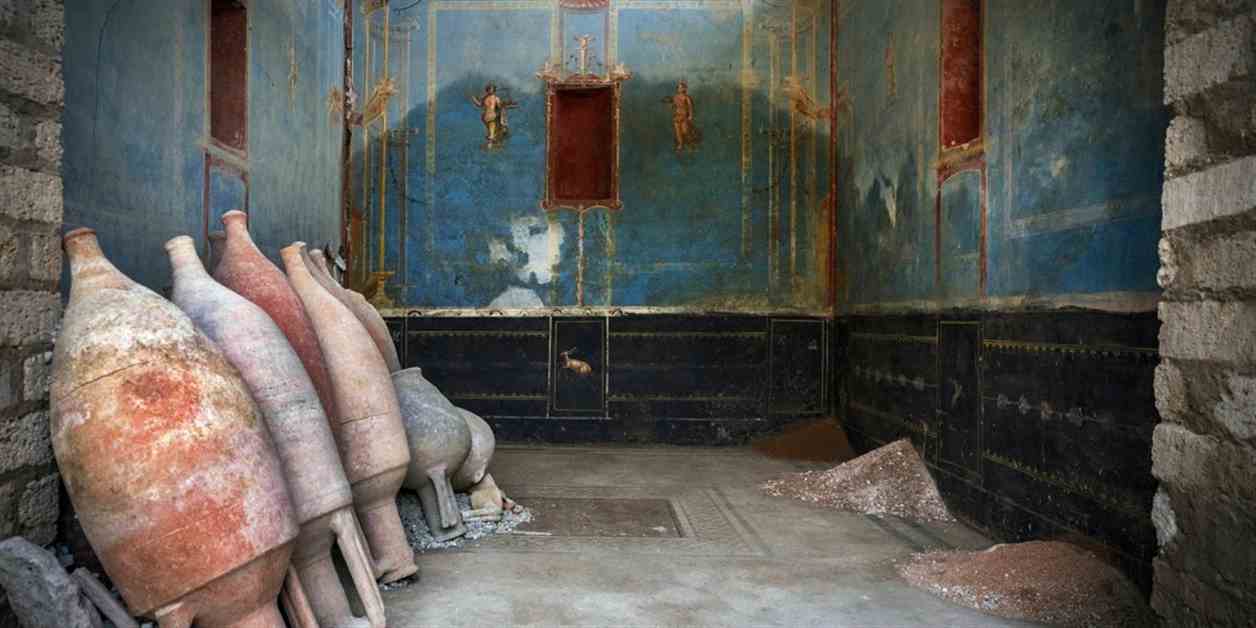In Pompeii, Italy, a remarkable discovery has been made after nearly 2,000 years of burial. A sacred room with rare blue walls has been unearthed, shedding light on the significance of this color in the Roman city. According to Gabriel Zuchtriegel, the site’s director, blue was considered the most expensive color due to its difficulty in production and the need to import it from distant regions like Egypt and the eastern Mediterranean.
The room, located in block No. 10 of Pompeii’s ninth section, is decorated with classical paintings depicting female figures representing the four seasons, agriculture, and sheep farming. It is believed to have been a sacrarium, a shrine dedicated to ritual activities and sacred objects. The presence of Egyptian blue in high concentrations in the room has fascinated archaeologists, as it is the first synthetically manufactured pigment in human history.
Mishael Quraishi, an archeology student from the Massachusetts Institute of Technology, described the room as “stunning” and highlighted the intricate process of creating Egyptian blue. The use of this pigment in the frescoes of the room has preserved the vibrant colors over centuries, thanks to the ancient Roman technique of painting on wet plaster.
The ongoing excavation in Pompeii is part of a larger project aimed at preserving the ancient city and its numerous unexplored areas. With more than 13,000 rooms in 1,070 houses and apartments already uncovered, Pompeii remains a treasure trove of history waiting to be revealed. The recent discovery of the blue shrine adds to the richness of Pompeii’s archaeological heritage.
In addition to the blue room, recent excavations in Pompeii have unveiled other significant findings, such as striking paintings depicting Greek heroes like Helen of Troy. These well-preserved frescoes offer a glimpse into the past, showcasing the artistry and cultural influences of the time. The paintings, found in a dining room with black walls, provide insights into the myths and stories that captivated ancient Romans.
As archaeologists continue to unearth new discoveries in Pompeii, the site’s director, Gabriel Zuchtriegel, reflects on the significance of these findings. He emphasizes the importance of preserving and studying these ancient relics, which offer a window into a bygone era. With each new excavation, Pompeii reveals more of its secrets, inviting us to explore and appreciate the rich history of this once-thriving city.




